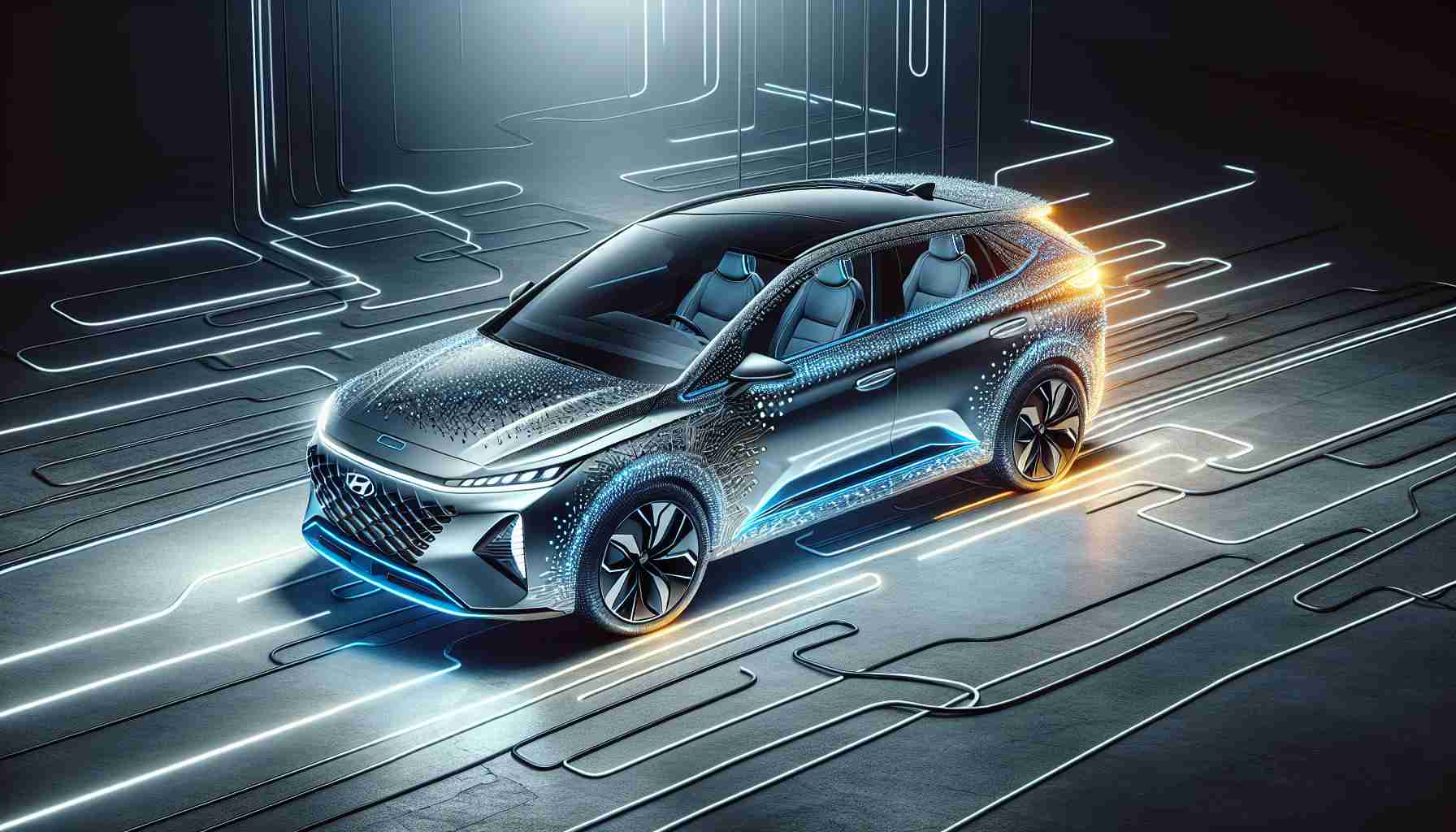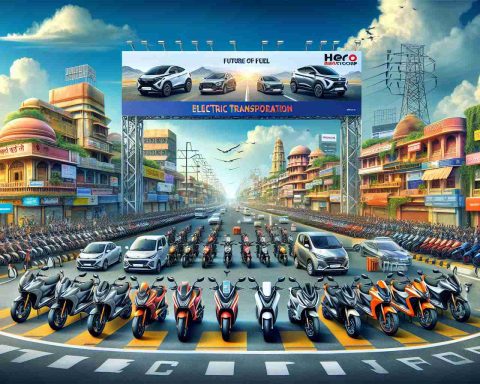The electric version of the Hyundai Staria is making waves, with exciting new details emerging from a recent reveal. This advanced people mover showcases a striking transformation from its internal combustion engine predecessors.
The electric prototype is distinguished by a significantly shorter rear overhang, a notable change from the current models. Additionally, its tail design brings a fresh aesthetic to the lineup, departing from the familiar elements of the standard Staria configurations.
Upon closer inspection, the prototype reveals a mostly sealed grille that opens to accommodate a charging port, innovative headlight designs reminiscent of the Staria Lounge, and a crisp two-tone paint scheme. Notably, the absence of a fuel filler door strongly indicates it is designed exclusively as an electric vehicle rather than a hybrid.
According to reports, Hyundai has plans for manufacturing the Staria EV in Europe, aiming for production to kick off in the early months of 2026. Markets such as Europe and the Asia-Pacific region, including New Zealand and Australia, are set to welcome this new electric utility vehicle.
The Staria EV is expected to feature an impressive 84kWh NCM battery, delivering an estimated range of up to 324 kilometers. This places it in direct competition with notable electric MPVs in Europe, including the Ford E-Tourneo and Volkswagen ID: Buzz, as well as established Chinese models like the LDV MIFA 9 and Zeekr 009.
Hyundai Staria EV: The Future of Electric Mobility
The recent reveal of the electric Hyundai Staria is a significant milestone in the evolution of electric vehicles (EVs). As this innovative people mover takes shape, its impact extends far beyond its eye-catching design and advanced engineering. The transition from internal combustion engines to electric power not only influences the automotive market but also holds profound implications for the environment, humanity, and the economy.
One of the most crucial aspects of the Hyundai Staria EV is its contribution to reducing greenhouse gas emissions. By embracing an all-electric model, Hyundai is taking a stand against climate change, a global issue that affects every corner of the planet. Internal combustion vehicles are a major source of air pollution and carbon dioxide emissions. With the implementation of an electric vehicle like the Staria, we can anticipate a significant decrease in pollutants, which directly benefits public health—an environmental boon that promotes cleaner air and better quality of life for humanity.
Moreover, the production plans for the Staria EV in Europe reflect a larger trend toward localized manufacturing, which can stimulate the economy by creating jobs and supporting sustainable practices. The assembly of electric vehicles requires a skilled workforce, and Hyundai’s investment in Europe could lead to a ripple effect in local economies, promoting technological advancement and green energy initiatives. As countries strive to meet stricter emissions targets and shift to renewable energy sources, industries surrounding EV production are also expected to grow, providing further economic opportunities and increasing the reliance on sustainable practices.
As we look toward the future, the shift toward electric vehicles like the Hyundai Staria is an integral part of a broader movement toward sustainability. With advancements in battery technology, like the anticipated 84kWh NCM battery that offers a range of up to 324 kilometers, the feasibility and attractiveness of electric vehicles are increasing. This shift is essential for reducing humanity’s carbon footprint as we move away from fossil fuels.
Furthermore, the rise of electric vehicles contributes to a significant transformation in societal habits regarding transportation. As more people adopt EVs, we can envision a world where public and private transportation relies on clean energy. This could pave the way for complete renewable energy systems that power not just cars but also homes and businesses.
In conclusion, the Hyundai Staria EV represents more than just a new vehicle. It symbolizes an essential step toward a sustainable future for humanity, impacting not just the environment but also economies and societal structures. As we embrace electric mobility, we forge a path towards a healthier planet, an invigorated economy, and a promising future for generations to come.
Hyundai Staria EV: The Future of Electric People Movers Unveiled
Introduction
The automotive landscape is witnessing a significant shift towards electric vehicles, and the Hyundai Staria EV is at the forefront of this revolution. With its recent reveal, this electric variant of the popular people mover showcases a striking evolution from traditional internal combustion engine models, promising innovation and sustainability in the world of passenger transport.
Key Features and Innovations
1. Distinctive Design Changes:
The Staria EV boasts a significantly shorter rear overhang compared to its predecessors, contributing to its agile look. Its tail design introduces a bold aesthetic departure, ensuring it stands out in the crowded electric vehicle market.
2. Innovative Grille and Lighting:
This new prototype features a mostly sealed grille that discreetly opens for the charging port, indicating a future-focused design element. Furthermore, the new headlight designs, inspired by the Staria Lounge, enhance both functionality and style.
3. Color Customization:
The electric vehicle showcases a modern two-tone paint scheme, appealing to a demographic interested in customization and eye-catching aesthetics.
4. Electric Vehicle Exclusivity:
The absence of a fuel filler door reaffirms its status as a dedicated electric vehicle, eliminating confusion among consumers regarding hybrid options.
Specifications and Performance
– Battery Capacity: Equipped with an 84kWh NCM battery, the Staria EV promises impressive power.
– Range: The vehicle offers an estimated range of up to 324 kilometers on a full charge, making it suitable for urban commuting and longer trips alike.
Market Positioning
The Staria EV is intended for production in Europe, with an anticipated launch in the early months of 2026. This strategic move aims to place the Staria EV in direct competition with several electric MPVs already available in the market, including:
– Ford E-Tourneo
– Volkswagen ID: Buzz
– Chinese models such as LDV MIFA 9 and Zeekr 009
Trends and Insights
As the demand for electric vehicles continues to grow globally, the Staria EV is set to cater to the needs of eco-conscious consumers in key markets like Europe, New Zealand, and Australia. The focus on all-electric utility vehicles aligns with trends towards sustainable transport solutions, providing an alternative for families and businesses desiring spacious and efficient vehicles.
Pros and Cons
Pros:
– Full electric design eliminates emissions and fuel costs.
– Strong battery capacity and range for everyday use.
– Unique design appeals to modern aesthetics.
Cons:
– Still awaiting detailed performance metrics.
– Competition from established electric MPVs may impact market entry.
Conclusion
The Hyundai Staria EV is a testament to the evolving electric vehicle market, promising exceptional design, performance, and practicality. As it gears up for its market debut, it stands as a strong contender in the electric MPV segment, poised to meet the rising demand for sustainable transportation.
For more insights and updates on the latest automotive innovations, visit the official Hyundai website at hyundai.com.









